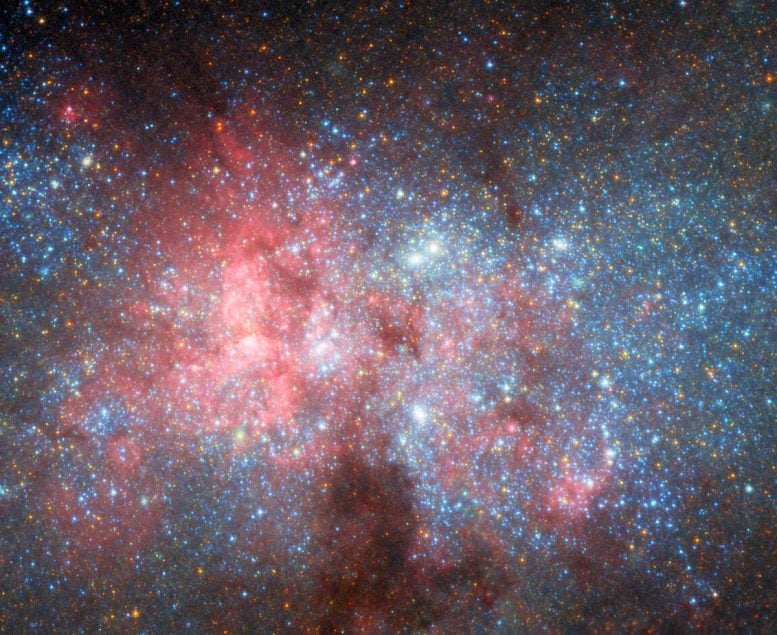
This newly released Hubble Space Telescope image depicts the blue compact dwarf galaxy NGC 5253, as seen by the High Resolution Channel (HRC) of Hubble’s Advanced Camera for Surveys (ACS).
ACS is a third-generation scientific instrument on Hubble, and was installed in 2002 as part of Servicing Mission 3B. It originally had three sub-instruments or “channels.” The Wide Field Channel (WFC), as its name and the name of ACS both suggest, is used to survey broad fields of distant and faint galaxies including the famous Hubble Ultra Deep Field, while the Solar Blind Channel is optimized for viewing ultraviolet light emitted by planets like Jupiter by blocking out sunlight. Both of these are still operational.
HRC is the third channel, and it was designed to take a close and extremely detailed look into the center of celestial objects like the centers of galaxies, star clusters, and star-forming regions. Its high resolution allowed astronomers to distinguish many stars in a small area, allowing them to examine dense regions in depth. NGC 5253, a starburst galaxy filled with extraordinary star clusters and continually forming stars, is a perfect target for ACS with HRC. This image shows the galaxy’s nucleus in detail, where super star clusters lurk amongst the dark dust clouds. A broader view of the galaxy can be seen here.
HRC was only operational for about five years, between ACS’s installation and electronics failures in 2007 that took it offline. While ACS was partially repaired in Hubble’s last servicing mission in 2009, HRC could not be restored. Close-in, high-resolution images of galaxy cores like this one are, therefore, something of a rarity.